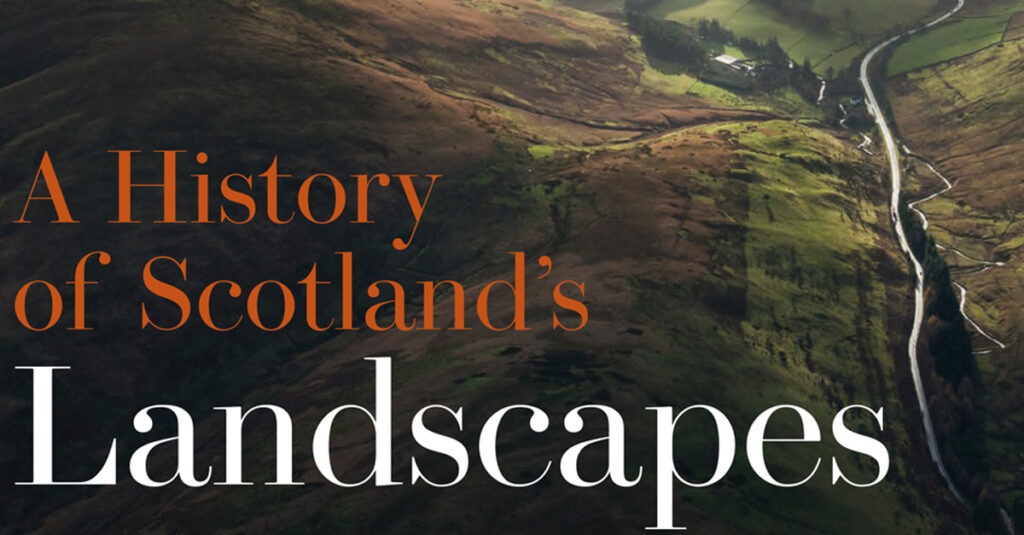We’ve now published our popular book, A History of Scotland’s Landscapes, in paperback.
In the ten thousand years since the glaciers retreated at the end of the last Ice Age, Scotland has been transformed not once, but many times. As the ice sloped off, it left in its wake great boulder fields and rivers of rubble.
The removal of the heavy weight of ice also allowed the downtrodden land to rise. But then glacial melt-waters pouring into swollen seas began to lap up the shoreline and along sea lochs and rivers – especially around 7,000 years ago when a great tsunami hit Scotland’s east coast. It took another thousand years before the land finally began to outrun the sea.
After the Ice
With the ice gone, tentative plant life began to drift in. Hardy herbs and shrubs took root among the rock, providing nourishment to the great beasts – mammoth, bison, woolly rhinoceros, giant fallow deer, reindeer, giant elk – that lumbered across the land bridge from Europe. But still the temperatures rose, sending these plants higher up the hillsides; lower down, birch, hazel, pine and oak moved in. Smaller creatures, from wolves to voles, moved with them as their larger predecessors began to die out.
By then humans had arrived too, dodging the rising waters which occasionally wiped out settlements on the coast and flitting from place to place to hunt, collect and fish. They soon knew how to manage the great forests that surrounded them. But in terms of material culture these earliest settlers have left us almost nothing apart from huge middens containing phenomenal quantities of shells, animal bones and tools (often at some distance from the current shoreline).
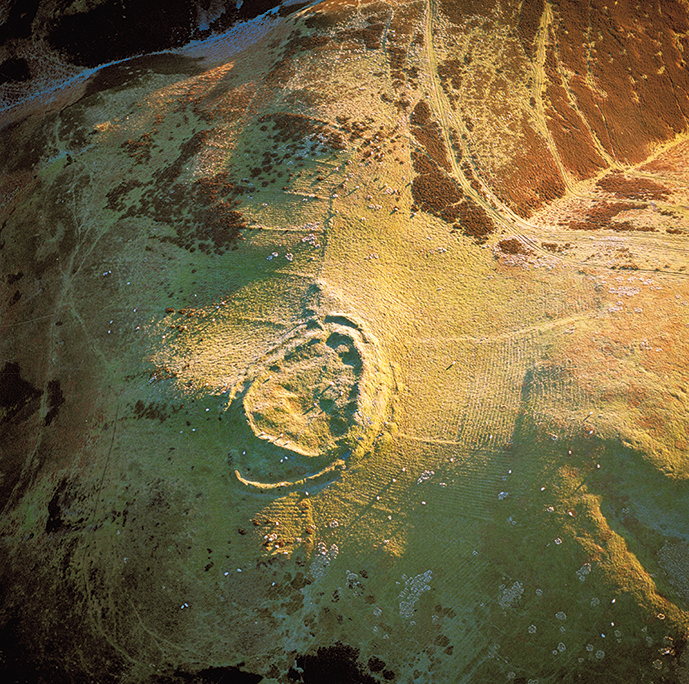
Iron Age fields at Hut Knowe, Roxburghshire
A Changing Climate
But then the warmer climate started to give way to wetter, windier and colder conditions. This led to yet another significant change to the landscape, one that was to make a huge difference to the lives of succeeding generations. With the decline in temperature, as well as pressure from rising human populations, trees began to die, decaying into peat. Meanwhile, by c2000 BC, our camp-based, semi-nomadic predecessors began to settle down and farm permanently.
By then, parts of the Highlands were already losing their pinewoods, open heath and grasslands taking their place. But from around 500 BC, it is clear that humans were also presiding directly over the more systematic removal of trees to make way for crops and livestock.
Peat continued to spread over succeeding millennia, transforming much of Scotland and its agricultural potential, until the scientific revolutions of the last few hundred years gave farmers the wherewithal to remove large swathes of it. Time and again prehistoric and even medieval communities were obliged to avoid the creeping, glutinous bogs and adapt to new conditions. And time and again, their descendants would wonder at what they found in the depths of the peat, from ancient roads to ploughed fields to huge tree trunks where woods no longer existed.
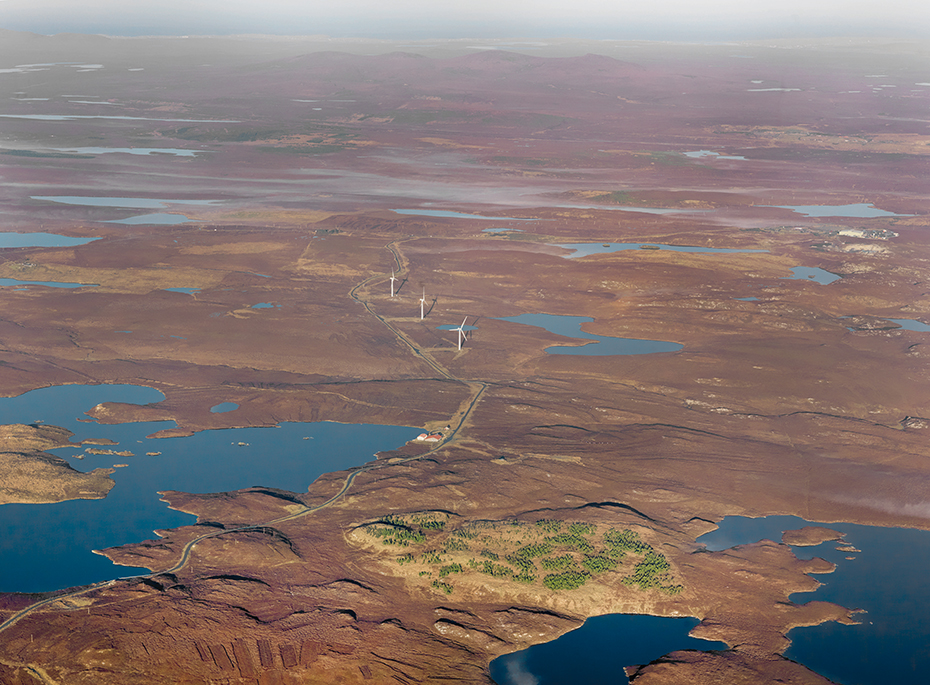
Lochs wind farm, Lewis with the remains of peat cutting in the foreground
Industrial Innovation
The next major change to the landscape came about through technological innovation. The earliest types of plough, ards, were perfectly good for dry sandy soils, but weren’t much use in the heavy, clay-based soils that dominated northern Europe. However, that is what our predecessors were stuck with for thousands of years. This was to change with the invention of the mouldboard plough, one of history’s under-appreciated heroes.
This plough allowed far greater areas of land to be brought into cultivation (the farming that went along with the plough was essentially communal). The plough also brought nutrients to the surface, pushed weeds underground and allowed the farmer to mix in manure, improving his yields. Additionally, the broad high-backed ridges – tell-tale signs of this new style of ploughing still visible in the landscape today – made for an effective drainage system.
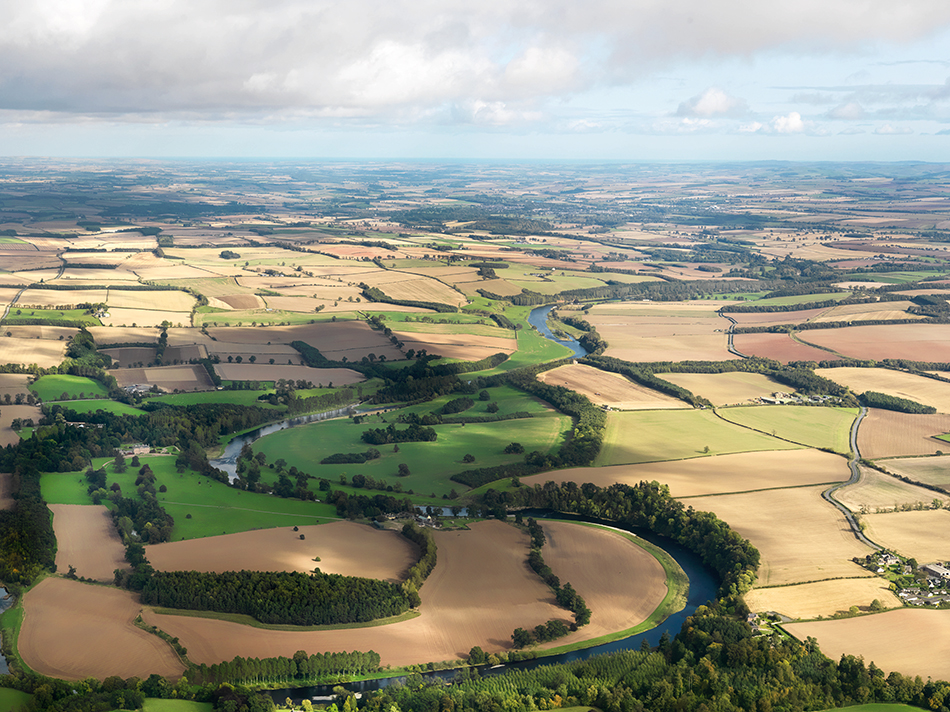
Mertoun House, Berwickshire sits in an intensively farmed landscape created in the 18th century
It would be pointless, however, to deny the impact of modern agricultural practices on the appearance of the land today and the survival – or otherwise – of what went before. With the application of science to almost every aspect of agricultural life the landscape was once more transformed from the eighteenth century onwards.
Agrarian Order
Above all, the agricultural improvers liked order, encouraging the construction of mile upon mile of straight hedgerows or stone walls, firstly around the new amalgamated farms and then separating fields within them. Many agricultural workers had already been attracted by the job opportunities offered by the fast-growing industries of the Lowlands, but others faced no choice but to look for work elsewhere as the communal system of agriculture was abandoned, with land parcelled up among a far smaller number of individual farmers.
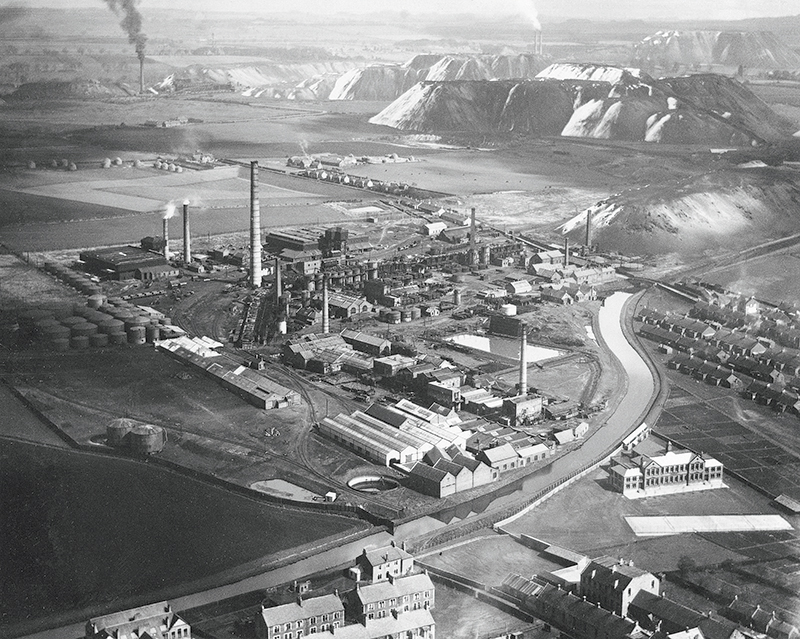
Broxburn Oil Works, West Lothian, 1927
New improved breeds of animals arrived too and particular regions developed a reputation for the superiority of their own animals and exported them all round the country. Large expanses of the uplands were soon patrolled by only a few shepherds and their dogs as their flocks pushed out the previous inhabitants to the coast, cities or the colonies.
A Process of Evolution
Improvement was not a single, all-encompassing revolution, but a stop–start, phased series of transformations that, as with everything else, reflected the particular environmental and historical conditions of the landscapes that it touched.
The Sutherland Clearances, with their horror stories of so many families forcibly removed for sheep in a comparatively short time, have captured the modern imagination precisely because they were such an unusually concentrated, violent and disruptive example of the processes that had been at work across the Highlands and Lowlands before and since. Sometimes, too, even the most up-to-date scientific techniques were no match for certain environmental conditions and the new ways of doing things were abandoned, leaving us with the evidence for failure as well as success.
This agricultural revolution continues even now. Climate change will also alter what can and can’t be done in both the lowlands and the uplands, as has always been the case; so too will any dramatic changes in farming subsidies beyond the current commitment to replicate European Union levels until 2020.
These key aspects of nearly 10,000 years of history have had a bearing on the evolution of Scotland’s landscapes. They make such an important contribution to the rich and colourful ‘personality’ of the place we call Scotland.
A History of Scotland’s Landscapes by Fiona Watson with Piers Dixon is now available in hardback and paperback from our online shop, Stor, and all good bookshops.

